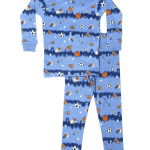What is a Capsule Wardrobe?
A capsule wardrobe is a compact, carefully curated collection of clothing made to mix and match effortlessly. Think of it like a musical playlist for your closet: every piece works with most others, no odd tracks that ruin the flow. The idea is not to own the fewest items possible, but the right items — those that suit your lifestyle, flatter your body, and make dressing simple and intentional.
Origins and Philosophy
The term “capsule wardrobe” dates to the 1970s, credited to Susie Faux and later popularized by designers and stylists. Philosophically, it borrows from minimalism, slow fashion, and functional design. At its core is the belief that quality + compatibility beats abundance + chaos. Instead of chasing trends, a capsule focuses on durability, versatility, and personal clarity.

Why Choose Minimalism?
Why do people keep coming back to capsules? Because minimalism in clothing translates to big wins in life: fewer decisions, less spending on impulse buys, and an everyday uniform that actually makes you feel put together.
Practical Benefits
Save time: you’ll spend less time choosing outfits.
Save money: fewer impulse purchases; smarter investments in key items.
Reduce clutter: your closet becomes an organized tool, not a storage problem.
Psychological Benefits
Less decision fatigue: think of your mornings without the outfit dilemma.
More confidence: wearing what fits your style consistently builds identity.
Lower stress: a tidy, intentional wardrobe reduces mental friction.
How to Start: A 7-Step Process
Ready to build one? Let’s break it down into seven actionable steps — a blueprint you can follow this weekend.
Step 1: Audit Your Closet
Open the door and be honest. Pull everything out (yes, everything). Make three piles: Keep, Maybe, Donate/Sell. Ask: Have I worn this in the last year? Does it fit my current life? Does it match at least three other items? If not, it’s probably not capsule material.
Step 2: Define Your Style & Needs
What does your week look like? If you work in an office, your capsule differs from a freelance creative or a parent on the go. List core activities (work, weekend, exercise, events) and map the clothes you need for each. Describe your aesthetic in three words — e.g., “clean, casual, tailored.” Those words become your decision filters.
Step 3: Choose a Color Palette
A solid palette is the backbone of mix-and-matchability. Pick:
- 2 neutral base colors (e.g., navy and gray)
- 2 secondary neutrals (e.g., cream and black)
- 2–3 accent colors for personality (e.g., olive, rust)
This small palette makes every top pair with most bottoms, like building blocks with matching connectors.
Step 4: Pick Core Pieces
Your core pieces are the reliable performers — the heavy hitters of the capsule. Aim for quality, fit, and timeless design.
Tops
- White button-down
- Neutral t-shirt(s)
- Lightweight sweater
- Blouse or structured shirt
Why? Tops are the visual anchor of most outfits. Neutral, well-fitting tops raise the perceived polish of any look.
Bottoms
- Dark straight jeans
- Tailored trousers
- Casual skirt (if you wear skirts)
- Versatile shorts (seasonal)
Pick cuts that complement your body and transition between settings.
Outerwear
- Classic blazer
- Neutral coat (wool or trench)
- Lightweight jacket (denim or utility)
Outerwear defines silhouette and often determines whether an outfit looks considered or thrown together.
Shoes
- Comfortable sneakers
- Neutral loafers/derbies
- Simple boots
- Minimal sandals (seasonal)
Shoes should match both practical needs and the capsule’s aesthetic.
Accessories
- Leather belt
- Minimal watch
- Neutral scarf
- Simple bag
Accessories are the punctuation marks of an outfit — small but impactful.

Step 5: Set a Piece Limit
Piece limits force choices. Common models: 30, 40, or 50 items including shoes and outerwear. Start conservative — you can always expand. The limit isn’t a prison; it’s a design constraint that increases creativity and clarity.
Step 6: Shop Strategically
When you buy, ask: Does it fit my palette? Will I wear it at least 30 times? Is it good quality? Avoid impulse purchases by waiting 48 hours and trying to imagine the item with three outfits already in your closet.
Step 7: Maintain and Rotate
A capsule is living: prune seasonally, mend what needs mending, donate what no longer fits your life. Every six months, reassess — the goal is a wardrobe that evolves with you, not a fixed monument.
Capsule Sizes & Examples
Different demands need different sizes.
30-Piece Capsule
A tight, streamlined set ideal for those wanting maximum simplicity. Typically includes 3–4 outerwear/shoes, 8–10 tops, 6 bottoms, and a handful of accessories.
50-Piece Capsule
More flexible, suits people with varied social roles or climates. Allows for more color and seasonal variance while still enforcing coherence.
Choose a size that aligns with how often you do laundry, how many roles you play, and how much outfit-repeat you’re comfortable with.
Seasonal Strategies
A smart capsule uses seasonal rotation. Store off-season items neatly and keep a small seasonal buffer (e.g., 5–7 items) to handle temperature swings. When autumn comes, swap lightweight linens for sweaters; when spring arrives, rotate in lighter colors and fabrics.
Care, Repair & Longevity
Buying is only half the battle — caring is where ROI happens.
- Follow care labels but lean into gentle methods (cold wash, air dry).
- Learn basic repairs: sewing a button, fixing a hem.
- Use a lint roller, and rotate shoes to extend lifespan.
- Invest in good hangers and storage to prevent stretching and damage.
A garment that lasts three times longer thanks to care is effectively a third of the price per wear.
Common Mistakes to Avoid
- Keeping “someday” clothes: if it hasn’t been worn in a year, let it go.
- Over-theorizing trends: capsules are about you, not every seasonal silhouette.
- Ignoring fit: an ill-fitted costly item will be worn less than a cheap piece that fits.
- Too many neutrals with no personality: include small accent pieces so you don’t feel like you’re wearing a uniform from a catalog.
Sustainability & Ethics
Capsules naturally reduce consumption, but you can amplify impact:
- Choose natural fibers or recycled materials when possible.
- Prefer brands with transparent supply chains.
- Buy second-hand — it’s often where you’ll find unique, high-quality pieces.
- Mend and repair before replacing.
Adopting a capsule wardrobe can be one of the most effective ways to reduce your fashion footprint without sacrificing style.
Cost Considerations and ROI
Yes, quality costs more up front. But think in cost-per-wear. A well-made coat or pair of shoes that lasts five years often saves money versus replacing cheap alternatives every season. Budget consciously: splurge on items you wear daily (coats, shoes), save on trendy pieces.
Conclusion
Building a capsule wardrobe is both a practical exercise and a philosophical shift. It asks you to prioritize fit, functionality, and personal style over the dopamine of newness. Start with an audit, define your needs, pick a cohesive palette, and assemble core pieces that work hard for you. With a little patience and intention, your closet becomes a tool that simplifies mornings, saves money, and supports a more sustainable lifestyle. The capsule isn’t about sacrifice — it’s about clarity: owning fewer things that give you more.
FAQs
Q1: How many items should a capsule wardrobe have?
A: There’s no single number — common ranges are 30, 40, or 50 pieces including shoes and outerwear. Choose a limit that fits your lifestyle and laundry cadence. Start smaller if you want stricter simplicity.
Q2: Can I include trendy pieces in a capsule wardrobe?
A: Yes — but sparingly. Keep trends as accent pieces if they pair with your palette and won’t clash with staples. The core should remain timeless to preserve versatility.
Q3: How do I handle different dress codes (work, casual, formal)?
A: Map your wardrobe to the activities you do most. Invest in a few transitional items (a tailored blazer, neutral dress) that can be dressed up or down with accessories.
Q4: Is a capsule wardrobe expensive to build?
A: It can be, initially, if you replace many low-quality items with higher-quality staples. Think long-term: cost-per-wear usually decreases as quality and longevity increase. Second-hand shopping and mid-range brands help balance cost.
Q5: How often should I update my capsule wardrobe?
A: Do a mini-audit each season and a major reassessment every 6–12 months. Life changes — new job, climate move, pregnancy — should prompt a thoughtful refresh rather than a full restart.








